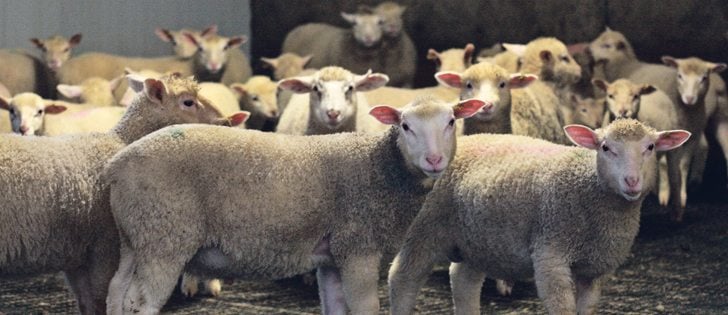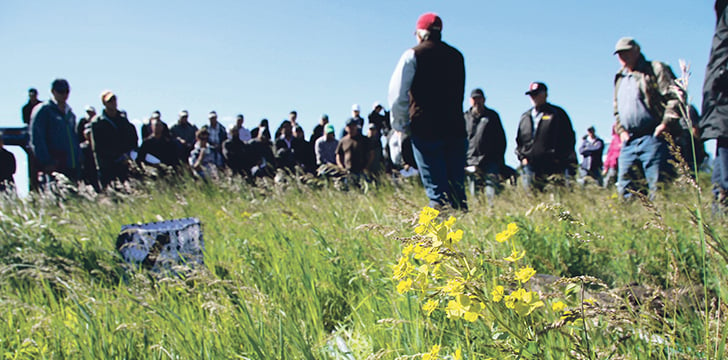The current cattle market is strong and the future looks good, so the more pounds of beef we raise, the greater the return.
Concentrating on preventing disease should mean fewer sick calves and hence better gains.
As well, the calf crop will be bigger if more cows are bred this summer, so fertility is something on which to concentrate.
Finally, maximizing growth from genetics and performance technologies should result in maximum pounds at weaning time to market or feed.
Herd fertility comes down to the bull and cow.
Read Also

Manitoba extends Crown land rent freeze
Manitoba government links the continued rental rate freeze on grazing and forage leases to economic and environmental challenges facing the industry
Cow fertility should be high if nutrition and body condition are correct and the vitamin and mineral program is sound, as long as the calving interval has been about two months.
Herd bulls need a semen evaluation to eliminate those that have low fertility and other ailments that would lead to poor serving capacity, such as bad feet and legs.
Bulls must also be free of other ailments that may be pulling them down, such as abscesses, lumpy jaws and penile injuries.
Producers still look at phenotype when buying bulls, but genetic testing and expected progeny differences mean there are lots of things to consider.
The fertility test and soundness exam go a long way to improving overall herd fertility. All it takes is one dud bull to result in an extended calving season and more open cows. The results can be disastrous if the low fertility bull is the dominant one in the herd or used in a single sire mating.
Trichomoniasis is something else that is checked at semen evaluation time if it is a problem in the producer’s area or the producer is part of a community pasture.
Many producers are still giving vitamins and mineral shots at birth, such as selenium and vitamins AD. The more vigorous the calves, the better they nurse and get colostrum. As a result, their protection from disease is much higher.
It helps with most diarrhea diseases if cows have had a scours protection vaccination. The better quantity, quality and quicker timing of colostrum ingestion is critical to the calf’s overall health, now and in the future.
Many producers are now giving vaccines to really young calves to prevent or at least reduce early pneumonia cases. How young will depend on what the veterinarian recommends.
Many then give the second vaccine at branding time so that by weaning they have already had their preventive shots.
Various combinations are available, including intranasal shots that may be easier for producers to give to young calves.
We still see blackleg outbreaks or deaths from other clostridial diseases every year, so make sure to use a seven to nine way clostridial vaccine.
Implanting can be done as soon as castration occurs to get better gains. The implants are also generally given to the non-replacement heifer calves.
This is the greatest return per input cost in the cattle business.
The only time producers would not consider using implants is if they are in a hormone free program. Producers who join one of these programs need to make sure the compensation more than offsets the performance they are leaving behind.
The implants are easy to apply and have been proven to be safe.
Almost 98 percent of cattle entering the feedlots are implanted, so you might as well get the same gains on these young calves for yourself.
Parasites are being detected more and more, so a deworming in midsummer will increase gains if they are detected on your operation. If in doubt, have the cattle checked for parasites in midsummer.
However, producers will still need the lice-warble-worm program they have been using in the fall.
Be aware of increasing internal worm resistance using routine pour-on products used in the fall.
Fly control into the summer can help with gains if it works into your management scheme. For example, flies are one of the ways that pinkeye spreads.
There is lots of talk these days about animal welfare.
The good news is that it’s been proven that prescribing non steroidal anti-inflammatory drugs and using local anesthetics can help calves keep eating and do better following many of the core procedures that are done on the farm, such as castration and dehorning and branding when necessary.
This should not be seen as an extra expense. Instead, the costs will be returned in the way of better performance because stress is minimized and there is less potential to catch other ailments such as pneumonia.
The use of intranasal technology is increasing and antibiotic use is generally decreasing. As well, almost all products given subcutaneously have minimized pain during the injection.
Direct marketing and selling through the internet and satellite sales minimizes animal welfare concerns about transportation and long stays at auction markets.
Livestock groups publish welfare risk assessments, which are good to review and find out where producers rank. These assessments may contain good practical suggestions on how to improve welfare practices in handling, loading, transportation, treating and housing.














